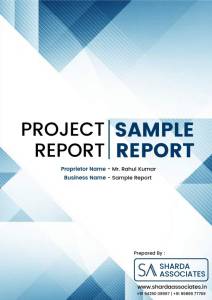Project Report For Timber business
Introduction
Project report for Timber business is as follows.
The timber business involves the harvesting, processing, and selling of wood products from forests. Timber is a valuable natural resource used in many applications such as construction, furniture manufacturing, paper production, and energy generation.
The timber industry can be divided into two main sectors: the logging or forestry sector and the wood processing sector.
The logging or forestry sector involves the management of forests to ensure the sustainability of timber harvesting. This includes the identification and marking of trees for harvest, the use of machinery and tools to fell, limb, and buck trees, and the transportation of the logs to a sawmill or other wood processing facility.
Logging companies typically work with landowners, government agencies, and conservation groups to ensure responsible forest management practices.
The wood processing sector involves the transformation of harvested logs into finished wood products. This can include sawmilling to produce lumber, plywood, and veneer; pulp and paper production for various paper products; and other manufacturing processes such as wood pellets and particleboard.
Wood processing facilities require a variety of specialized equipment and skilled labor to produce high-quality wood products efficiently.
The timber business is affected by a range of economic, environmental, and social factors. The global demand for wood products, as well as changes in trade policies and regulations, can have a significant impact on the industry’s profitability.
Environmental concerns such as deforestation, climate change, and biodiversity loss are also important considerations for the timber industry, and many companies are investing in sustainable forestry practices to address these issues. Social factors, such as labor availability and worker safety, are also critical for the success of the timber business.
In summary, the timber business involves the harvesting, processing, and sale of wood products from forests. This is a complex industry that is affected by a range of economic, environmental, and social factors.
Sustainable forestry practices, technological advancements, and changing market conditions are driving the evolution of the timber business, making it an exciting and dynamic field.
Market Potential Of Timber Business
According to a report by ResearchAndMarkets.com, the global timber market was valued at $640 billion in 2020 and is projected to reach $875 billion by 2026, growing at a CAGR of 5.3% during the forecast period.
The report cites the increasing demand for wood products in the construction industry, as well as the rising popularity of engineered wood products and cross-laminated timber, as key drivers of market growth.
Another report by Statista estimates the global forest products industry, which includes timber and pulp and paper, to have generated $712 billion in revenue in 2020. This figure is expected to reach $787 billion by 2023, representing a CAGR of 3.3%.
In terms of regional markets, North America and Europe are major players in the global timber industry. According to the European Timber Trade Federation, the European timber market is worth around €60 billion per year, with the construction sector being the largest consumer of timber products. In North America, the timber industry is estimated to generate over $200 billion in economic activity each year, according to the American Forest Foundation.
The Asia-Pacific region is also a significant market for timber, with countries like China, Japan, and India driving demand for wood products. According to a report by Transparency Market Research, the Asia-Pacific timber market was valued at $135.5 billion in 2018 and is projected to reach $202.8 billion by 2027, growing at a CAGR of 4.5% during the forecast period.
In conclusion, the timber industry is a sizable and dynamic market with significant growth potential in the coming years. The increasing demand for sustainable and eco-friendly building materials, coupled with advancements in engineered wood products and timber harvesting practices, is expected to drive the industry’s growth in the years ahead.
Project Report Sample On Timber Business
Need Help?
Create 100% Bankable Project Report

